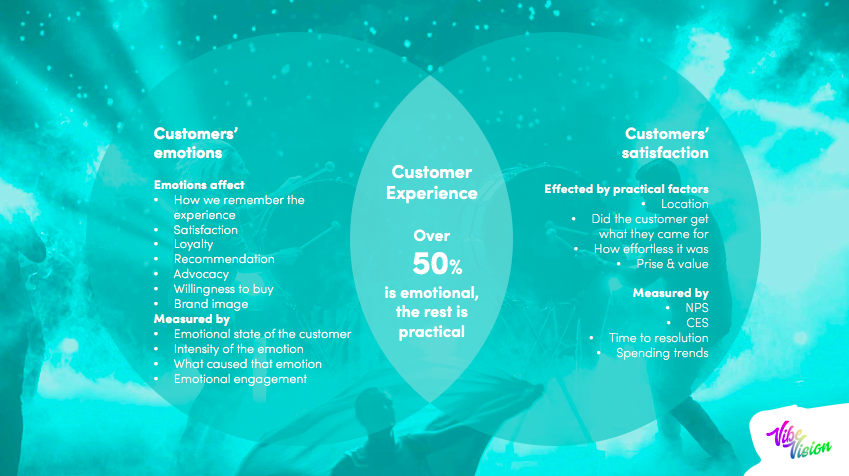The Data Handbook
How to use data to improve your customer journey and get better business outcomes in digital sales. Interviews, use cases, and deep-dives.
Get the bookCustomer experience (CX) has been a hot topic in recent times.
How CX drives value for businesses and how in the global competition of our time, the only thing that can differentiate us from our competitors is the quality of the customer experience that we provide.
Since the Net Promoter Score (NPS) was introduced to the world in early 2000s discussion over the right indicator and the best way to measure CX has been incessant. As many companies have adopted customer satisfaction as at least one of their Key Performance Indicators (KPI), it really does matter how you measure your CX.
When it comes to measurements, you get exactly the results that you are looking for. We are constantly measuring and developing our customer experience – but how do we really know a company was actually able to provide the exceptional experience so many companies promise these days?
Traditional customer surveys are actually measuring only customer satisfaction, not the experience as such. I believe, that the best and the only way to measure the experience part in customer experience is to measure the emotions that our customers have.
 Best kind of customer insight: emotional data enriched by practical knowledge of customers’ satisfaction and spending behaviour
Best kind of customer insight: emotional data enriched by practical knowledge of customers’ satisfaction and spending behaviour
The value of understanding emotions
And oh boy, do I love emotions! Emotions are what motivates us to act. We make all of our decisions largely based on emotions. And as much as we like to think that in a B2B world we are rational human beings, that is not the case, the emotions do really rule the world of our minds. 74% of the customers with positive emotions toward the company will advocate for it, and 63% will retain. In other words, 63% of them will stay with the company, not searching for another possible service or product provider.
While the advocating percentage is only 8 with the customers with negative emotions and only 13% of them will retain. Customers with positive emotions will more likely trust the company, they will use the services more, forgive the company if it makes mistakes and will more likely try out new products or offerings.
Our emotions also affect how will we speak of the company. We all know that customer advocacy is the most effective and the cheapest way of marketing. People do influence people, and it really does show in the bottom line. To gain approximately 1% growth in the revenue you need to improve you NPS by 7%.
We all probably know by now, that a happy customer is a profitable one. But it doesn’t end here! A study made by Magids, Zorfas and Leemon shows us that emotionally connected customers are even more profitable than the satisfied ones – 52% more profitable, to be exact.
Emotions as KPI
How to measure the customers’ emotions then? The division whether the customer is happy or not, or measuring the emotions only on positive-negative scale is better than nothing of course, but that’s simply not enough. There are many different emotions and they all cause us to act differently. A satisfied customer is different than an inspired our pleased one. Even if all of these emotions are positive, they motivate us completely differently and make us take different paths on our customer journeys.
To gain true understanding of the experience part in customer experience, we need to know what emotions our customers are feeling, what are the reasons behind those feelings and how do these emotions affect their behavior.
This is exactly what we have been working on in VibeVision. Our mission is to make it as simple as possible to measure not only customers’, but also personnel or participants’ experience, in a slightly different way. VibeVision™ is a scientifically based measurement and analyzing tool, that transforms emotion data into a format that is simple to gather, understand and easy to combine with all the exciting customer data that companies may have.
By analyzing the data and reasons behind the emotions, not only can we gain a more complete understanding of the experience, but also use the knowledge in further development towards exceptional customer experience.
Only by knowing the emotions involved with an experience can we analyze weather the experience we provide is truly the one we promise to our customers and evaluate if it is in line with our strategy. And only by understanding all of this, can we begin to develop the customer experience towards a direction that is truly beneficial for our business.
This blog post was written by our guest blogger Julia Kurhinen from VibeVision. Get in touch with her.
The Data Handbook
How to use data to improve your customer journey and get better business outcomes in digital sales. Interviews, use cases, and deep-dives.
Get the book




